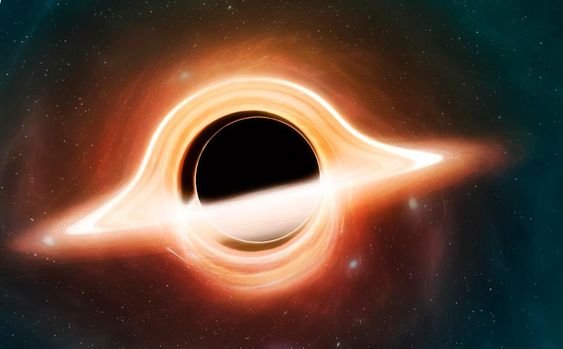Black holes are one of the most fascinating and mysterious phenomena in the universe. They are regions in space where the gravitational pull is so intense that nothing—not even light—can escape. This characteristic makes black holes invisible, detectable only through their effects on nearby matter and light.
What Is a Black Hole?
A black hole is formed when a massive star exhausts its nuclear fuel and collapses under its gravity. The core of the star contracts to a point of infinite density known as a singularity. Surrounding this singularity is the event horizon—the boundary beyond which nothing can escape the gravitational pull of the black hole. Once something crosses this event horizon, it is lost to the black hole forever.

Types of Black Holes
Black holes come in different sizes, and they are typically categorized into three main types:
1. Stellar Black Holes
- Formation: Stellar black holes are the remnants of massive stars that have undergone supernova explosions. These stars are typically about 20 times more massive than our Sun.
- Size: These black holes typically have a mass between 3 to 20 times that of the Sun.
- Location: Stellar black holes can be found scattered throughout galaxies, often detected through their interactions with nearby stars or the X-rays emitted as they consume matter.

2. Supermassive Black Holes
- Formation: The exact origin of supermassive black holes is still a mystery. Some theories suggest they formed from the merging of many smaller black holes, while others propose that they could have formed from large gas clouds collapsing early in the universe’s history.
- Size: These behemoths have masses ranging from millions to billions of times the mass of the Sun.
- Location: Supermassive black holes are found at the centers of most galaxies, including our own Milky Way. The black hole at the center of our galaxy, known as Sagittarius A*, has a mass equivalent to about 4 million Suns.

3. Intermediate Black Holes
- Formation: Intermediate black holes are thought to form from the merging of smaller black holes or the collapse of massive star clusters.
- Size: They are larger than stellar black holes but smaller than supermassive ones, with masses ranging from hundreds to thousands of times the mass of the Sun.
- Location: These black holes are relatively rare and are often found in star clusters or dwarf galaxies.

How Do We Detect Black Holes?
Since black holes emit no light, detecting them requires observing their interactions with surrounding matter and light. Here are some of the ways astronomers detect black holes:
1. Gravitational Effects
Black holes have a significant gravitational influence on nearby objects. By observing the orbits of stars and gas clouds around an unseen massive object, astronomers can infer the presence of a black hole.
2. X-Ray Emissions
When a black hole pulls in matter from a nearby star or gas cloud, the material forms an accretion disk around the black hole. As the material in the disk heats up, it emits X-rays, which can be detected by space telescopes.
3. Gravitational Waves
When two black holes merge, they produce ripples in spacetime known as gravitational waves. These waves were first detected by the LIGO and Virgo observatories in 2015, providing direct evidence of black holes and their collisions.

The Mysteries of Black Holes
Black holes remain one of the most intriguing and enigmatic objects in astrophysics. Here are a few of the biggest mysteries surrounding them:
1. The Singularity
The singularity at the center of a black hole is a point where gravity becomes infinite, and the laws of physics as we know them break down. Understanding what happens at the singularity remains one of the biggest challenges in modern physics.

2. Information Paradox
According to the laws of quantum mechanics, information about the physical state of objects should never be lost. However, when objects fall into a black hole, it seems that their information is lost forever, leading to a paradox. This issue has puzzled physicists for decades and remains unresolved.

3. Wormholes and Time Travel
Some theories suggest that black holes could be connected to other points in spacetime through wormholes. These hypothetical tunnels could, in theory, allow for shortcuts through space and time, raising fascinating possibilities for time travel. However, these ideas remain speculative and unproven.

Conclusion
Black holes are more than just cosmic vacuum cleaners; they are fundamental to our understanding of the universe. From the remnants of massive stars to the supermassive giants lurking in galactic centers, black holes challenge our understanding of gravity, space, and time. As we continue to explore the cosmos, black holes remain at the forefront of some of the most exciting and profound discoveries in astrophysics.
Understanding these enigmatic giants may one day unlock the secrets of the universe itself.
Leave a Reply